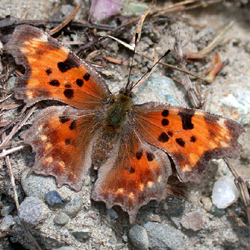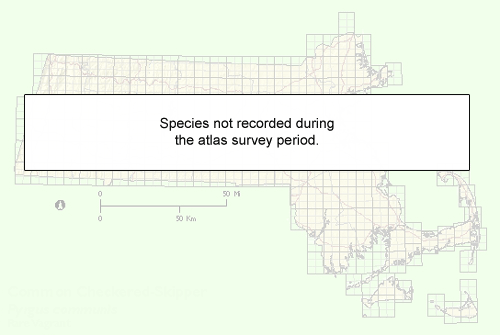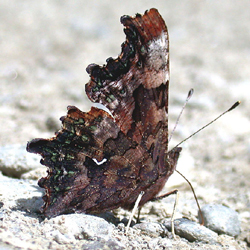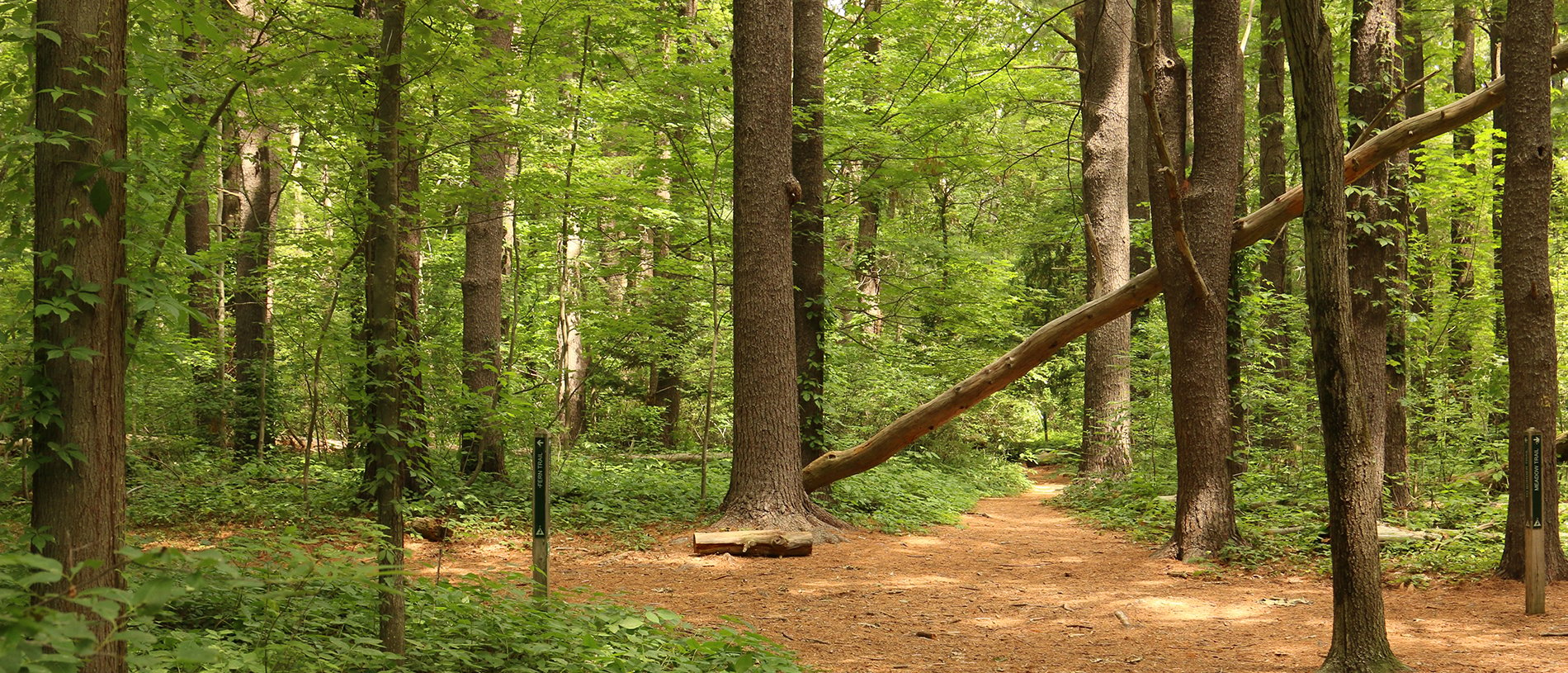Find a Butterfly
Green Comma
Polygonia faunus
Named
Edwards, 1862

Identification
Wingspan: 1 15/16 - 2 7/16". Separated from other anglewings by its exceptionally irregular wing borders. The submarginal green markings on the hindwing are also diagnostic. Faunus has an angular silver comma on the hindwing below.
Distribution
Central Alaska east across boreal Canada to the Maritime Provinces; in the West, broadly southward through the Sierras and Rockies and in the East through the northern Great Lakes Region, northern New England and New York with an isolated population in the southern Appalachians (Opler, 1992).
Status in Massachusetts
No recent records. This species occurs regularly in Maine, New Hampshire, and Vermont; persistent and timely field work in Massachusetts should also reveal this species, presumably in small numbers. Scudder (1889) lists records for Willamstown, Warwick, Leverett, and Amherst. Farquhar called it very rare south of the White Mountains. There is a 1940‘s record from the vicinity of Mt. Greylock (R. Wendell).

Flight Period in Massachusetts
Mid summer to fall with adults overwintering and flying again in spring.
Larval Food Plants
Willows (Salix spp.), alders (Alnus spp.), birches (Betula spp.), and ericaceous plants including blueberries (Vaccinium spp.).
Adult Food sources
Information for this species in Massachusetts is currently unavailable.

Habitat
Boreal woodlands.
Life Cycle
EGG: Green; turban shaped with eleven or twelve vertical ribs. OVIPOSITION: Eggs laid singly or in stacks of three or four on leaf of host plant. LARVA: Black to brownish yellow with greenish stripes and dark chevrons on back; head is black with a pair of branching spines typical of Polygonia species. Larvae feed in a leaf shelter. CHRYSALIS: Tan to brown with gold colored markings; angular; hangs in inverted position from twig. OVERWINTERING STAGE: Adult.
Adults emerge from hibernation in late spring and are on the wing through late June. The new brood spend approximately five weeks in the larval stage and another two weeks as chrysalids. Adults are seen again in late July and fly until early October.
Account Author
Brian Cassie



